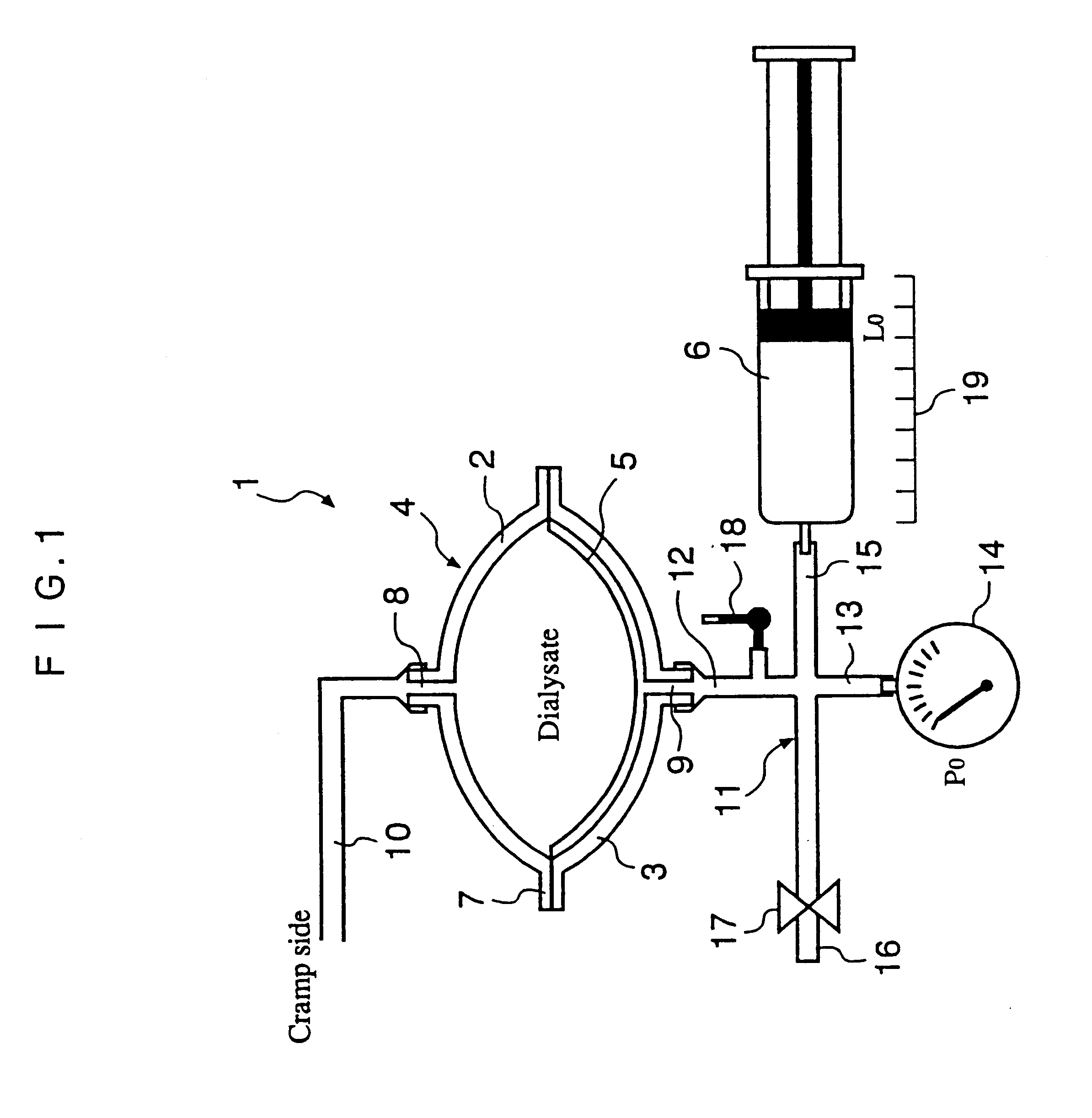Automated solution injection-discharge system and automated peritoneal dialysis system
a technology of injection-discharge system and injection-discharge system, which is applied in the direction of dialysis system, peritoneal dialysis, suction device, etc., can solve the problems of user error, contamination of the dialysis system connector, and troublesome patients
- Summary
- Abstract
- Description
- Claims
- Application Information
AI Technical Summary
Benefits of technology
Problems solved by technology
Method used
Image
Examples
Embodiment Construction
is provided based on the drawings.
FIGS. 1 and 2 outline the automated solution injection-discharge system of the APDS, using a diaphragm related to the present invention that sucks or introduces a peritoneal dialysate or a drain from a peritoneum. In FIG. 2, the diaphragm of FIG. 1 is inverted to the upper position. In FIGS. 1 and 2, the numbers are identical for the same machine configurations.
In FIG. 2, automated solution injection-discharge system 1 is provided with a chamber 4 equipped with a hemispherical top cover 2 and a hemispherical bottom cover 3, a diaphragm 5 installed in chamber 4, and a driving device 6 to move diaphragm 5. Diaphragm 5 is made of a synthetic resin thin film such as silicone, vinyl chloride resin, natural rubber, thermoplastic elastomer, or other materials. The diaphragm is ordinarily approximately 0.2 to 0.5 mm in thickness. Top cover 2 and bottom cover 3 are preferably made of hard transparent plastic such as polycarbonate, vinyl chloride resin, polyp...
PUM
 Login to View More
Login to View More Abstract
Description
Claims
Application Information
 Login to View More
Login to View More - R&D
- Intellectual Property
- Life Sciences
- Materials
- Tech Scout
- Unparalleled Data Quality
- Higher Quality Content
- 60% Fewer Hallucinations
Browse by: Latest US Patents, China's latest patents, Technical Efficacy Thesaurus, Application Domain, Technology Topic, Popular Technical Reports.
© 2025 PatSnap. All rights reserved.Legal|Privacy policy|Modern Slavery Act Transparency Statement|Sitemap|About US| Contact US: help@patsnap.com



